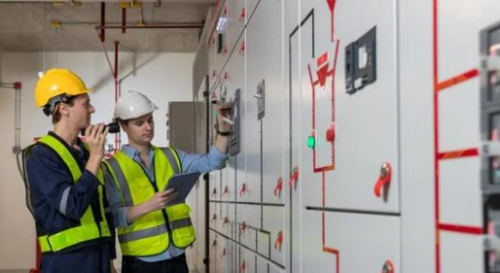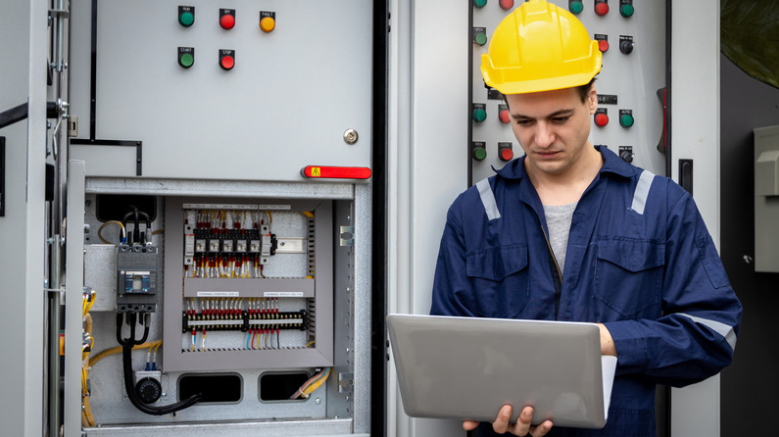SCADA (Supervisory Control and Data Acquisition) systems have been increasingly used in building management to monitor and control building systems, such as HVAC (heating, ventilation, and air conditioning), lighting, security, and access control. In this article, we will take a closer look at the role of SCADA systems in building management and their characteristics.
Introduction to SCADA Systems in Building Management
 Building management involves many complex systems, such as HVAC, lighting, security, and access control, that need to be monitored and controlled to ensure optimal performance, energy efficiency, and occupant comfort and safety. SCADA systems are used to provide real-time monitoring and control of these systems, allowing building managers to make quick and informed decisions.
Building management involves many complex systems, such as HVAC, lighting, security, and access control, that need to be monitored and controlled to ensure optimal performance, energy efficiency, and occupant comfort and safety. SCADA systems are used to provide real-time monitoring and control of these systems, allowing building managers to make quick and informed decisions.
SCADA systems in building management consist of four main components: the supervisory system, remote terminal units (RTUs), programmable logic controllers (PLCs), and unified communication networks. The supervisory system is the central unit that collects, stores, and displays data from the RTUs and PLCs. RTUs are devices that collect data from sensors and other devices, then send that data to the supervisory system. PLCs are used to control the building systems based on the data received from the RTUs.
SCADA Systems’ Characteristics in Building Management
 SCADA Software is a great help in building management. They provide real-time monitoring and control of the building systems, which helps managers identify problems early and take corrective action quickly. SCADA systems also enable remote control of building systems, reducing the need for on-site personnel and improving safety considerations. Additionally, SCADA systems can be integrated with other technologies like IoT and AI to improve efficiency and productivity.
SCADA Software is a great help in building management. They provide real-time monitoring and control of the building systems, which helps managers identify problems early and take corrective action quickly. SCADA systems also enable remote control of building systems, reducing the need for on-site personnel and improving safety considerations. Additionally, SCADA systems can be integrated with other technologies like IoT and AI to improve efficiency and productivity.
Another feature of SCADA systems is their ability to optimize the performance of building systems. SCADA systems can monitor the energy consumption, temperature, humidity, and other parameters of building systems, allowing managers to adjust the system settings and optimize the performance of the building systems. This can help to reduce energy consumption, operating costs, and carbon emissions.
SCADA systems in building management present some characteristics that you and your organization’s managers need to consider. One of the biggest ones is cyber security. SCADA systems are vulnerable to cyber attacks, which can lead to system failure, data loss, and even physical damage. Therefore, it is paramount to implement strong cyber assessments, such as firewalls, intrusion detection systems, and encryption, to protect SCADA systems from cyber threats.
Another aspect is the cost of implementing and maintaining SCADA systems. SCADA systems require specialized hardware and software and skilled personnel to install and maintain them. Additionally, upgrading and integrating SCADA systems with other technologies can be a complex and costly process.
What will happen to SCADA Systems in Building Management?
 The future of SCADA systems in building management is driven by advances in technology and the increasing demand for energy efficiency, occupant comfort, and safety. One of the trends in SCADA systems is the use of cloud-based solutions. Cloud-based SCADA systems offer many benefits, including scalability, flexibility, and reduced costs. They also provide a centralized platform for data management and analysis.
The future of SCADA systems in building management is driven by advances in technology and the increasing demand for energy efficiency, occupant comfort, and safety. One of the trends in SCADA systems is the use of cloud-based solutions. Cloud-based SCADA systems offer many benefits, including scalability, flexibility, and reduced costs. They also provide a centralized platform for data management and analysis.
Another trend in SCADA systems in building management is the use of advanced analytics. Advanced analytics can be used to analyze data collected from building systems, identify patterns and anomalies, and make predictions. This can help managers optimize building systems, reduce energy consumption, and improve occupant comfort and safety.



